
The pre-setup Attacker/defender rolls produced no doubles this time. So neither army started the game with any of the bonuses listed in the army advantage chart. Losing this dice roll the Spanish were therefore classified as the defender in the coming battle. Rolling first on the terrain table they generated a small area of broken terrain. This was placed near the centre line on the Carthaginian side of the table. The Carthaginians managed to dial up and take an optional pass on the terrain chart for their roll. A low third and final roll on the terrain chart meant the Spanish wouldn’t be able to add anything more to the battlefield much to their disappointment.
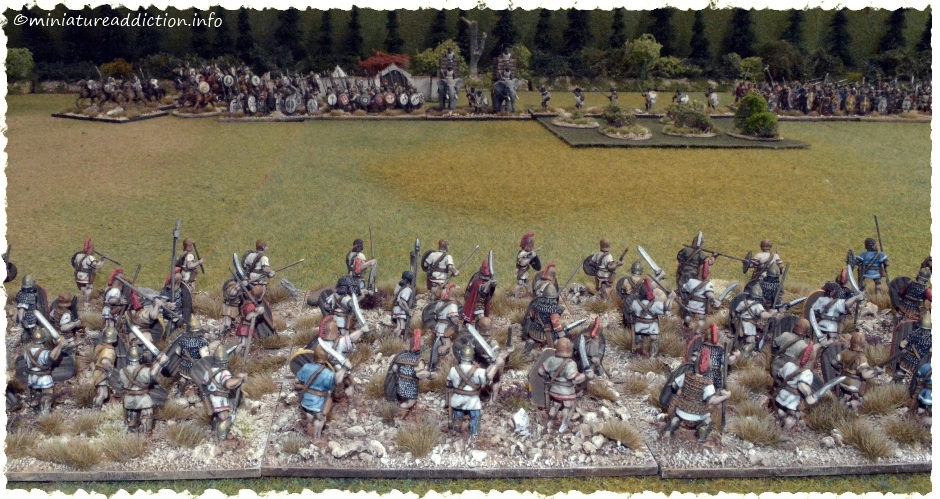
Deployment & Battle Plans
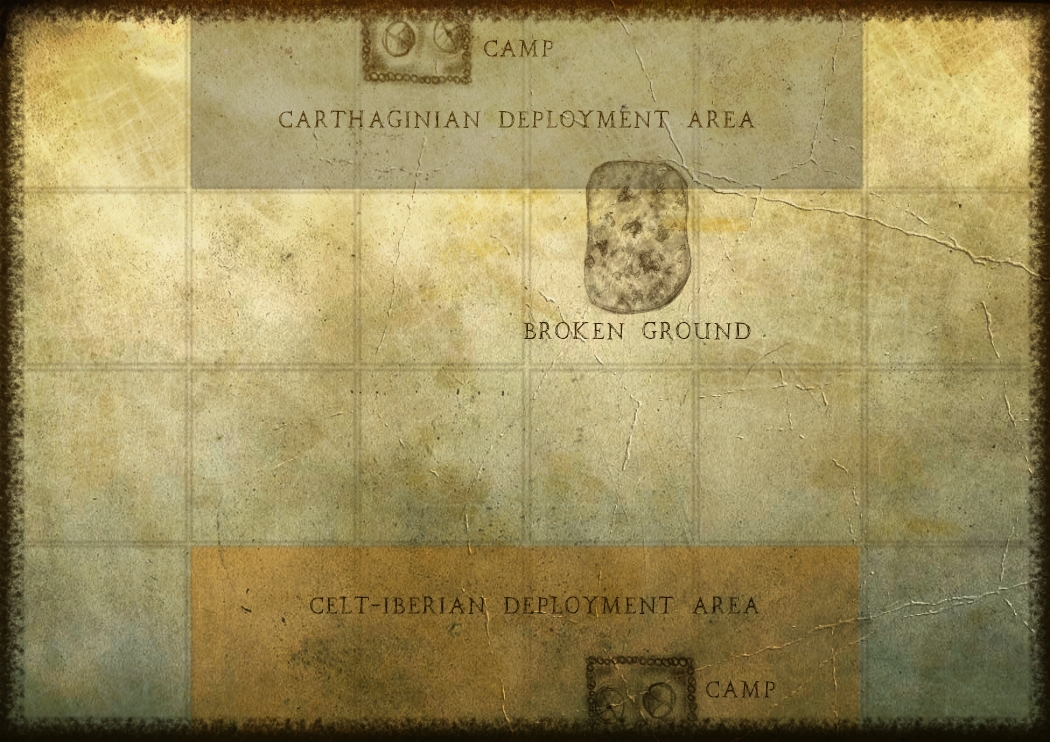
Carthage: The basic plan would be to pin the bulk of the enemy war-bands in place with the heavy infantry. Once these troops were locked in combat the war elephants and Gallic warriors (with their large charge bonuses) would be sent in to over whelm the embattled enemy formations. In ordered to prevent the more numerous Spanish from swinging the balance in their favour the cavalry would be used to aggressively contain as many enemy elements as possible.
Celt-Iberians: By placing a large contingent of veterans in the centre the elite warriors would be free to face off against their lower quality Gallic counterparts.
If these could be charged and beaten quickly it would undoubtedly rout one third of the enemy’s army. The veterans would engage and hold the centre until the elites (after besting the war-bands) could fall on the enemy’s flank. The lower ranking warriors would be tasked with keeping the Carthaginian cavalry in play until the damage could be done elsewhere.
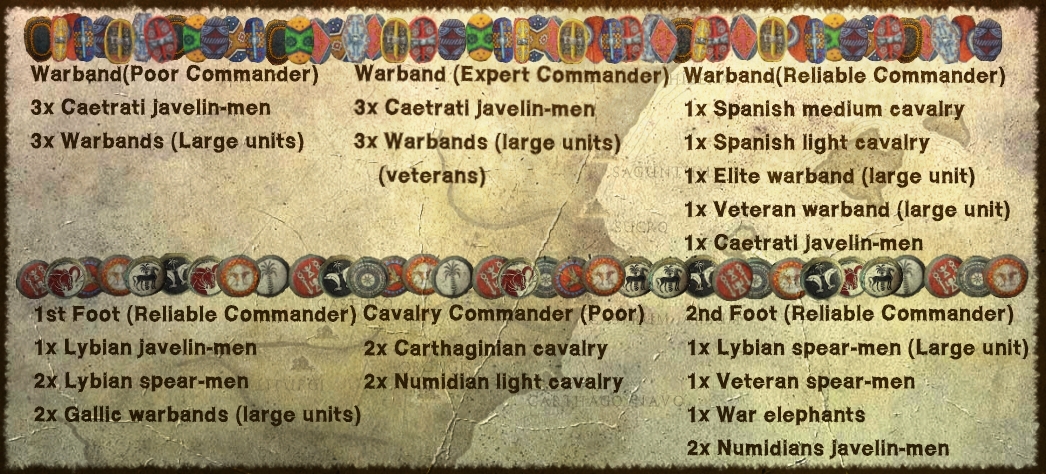
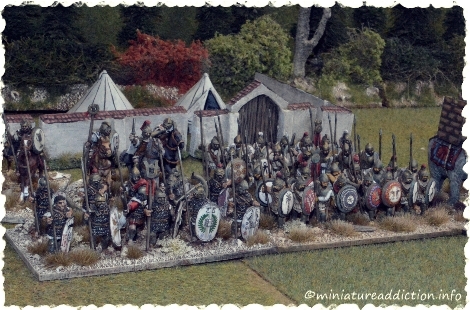
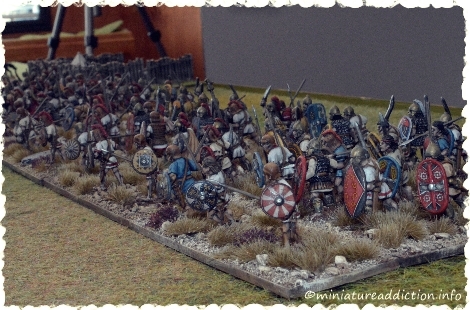

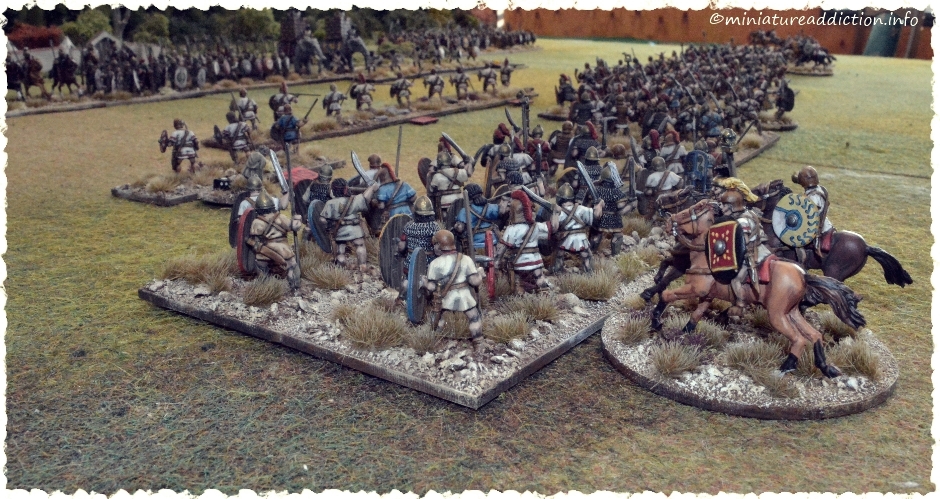

Turn one saw the Spanish double move their Caetrati forward and engage the enemy’s skirmishers with short range missile fire. A single element of Numidians suffering the only serious casualties here. Close behind the Caetrati came the massed ranks of Celtic war-bands moving forward as one towards the enemy line of battle. The Carthaginian troops also advanced, although their left flank fell somewhat behind taking time to expand their formation.
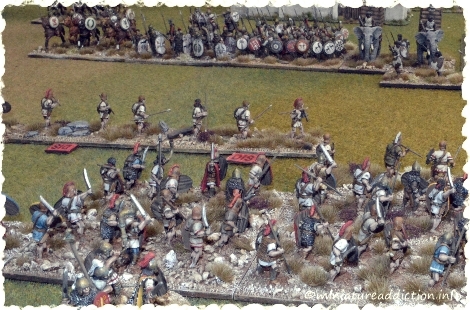
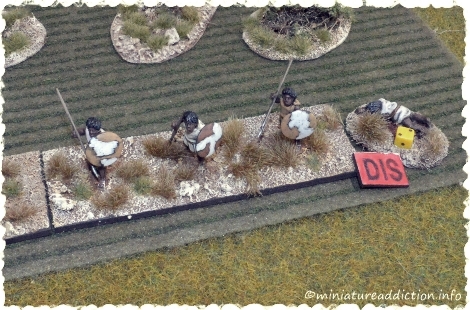

Turn two begins well for the Carthaginians. Their Numidian light horse advance quickly causing some disorder to the Spanish lines with their deadly javelins. Charging forward the Libyan heavy infantry scatter several elements of Caetrati stationed in the centre of the table. However, the Spanish war-bands manage to launch a limited counter charge here and both sides clash in the middle of the battlefield.
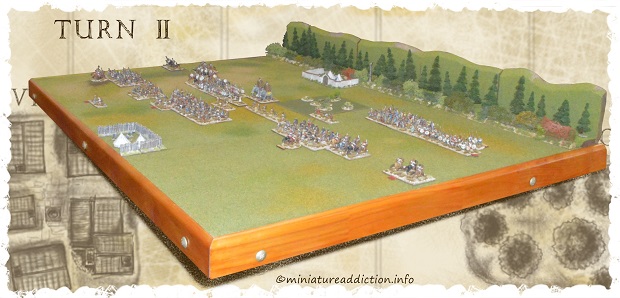
With the Spanish warriors now pinned in place it was time to send in the war elephants to smash the centre and seal the game. The Carthaginian plan was solid and perfectly executed (well I thought so), but the dice throwing wasn’t. The Spanish troops although battered took everything the Carthaginians could throw at them. Out of units to commit to the on going melee the initiative now moved to the Spanish army. Fresh warriors were rush forward joining those battling the elephants. Several units of Caetrati having defeated the Numidians now moved into the broken ground between the Carthaginian centre and left flank. The chances of Carthaginian victory were now fading fast.
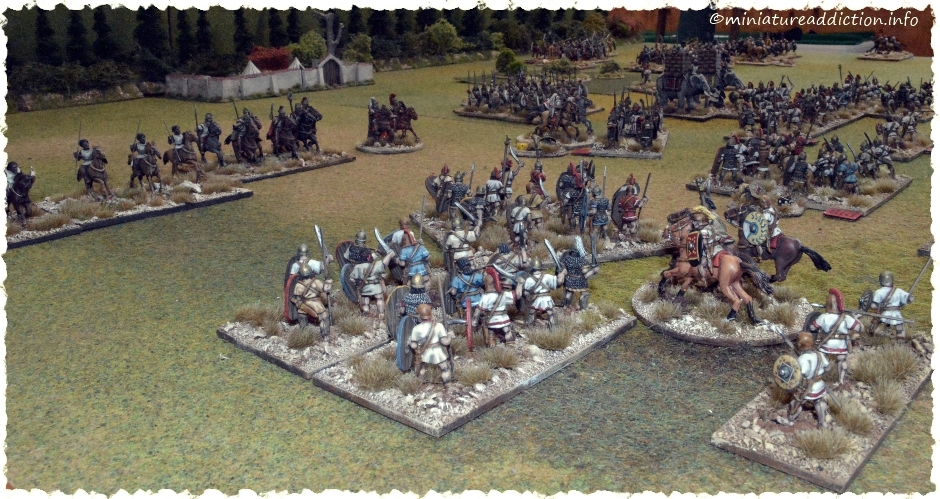

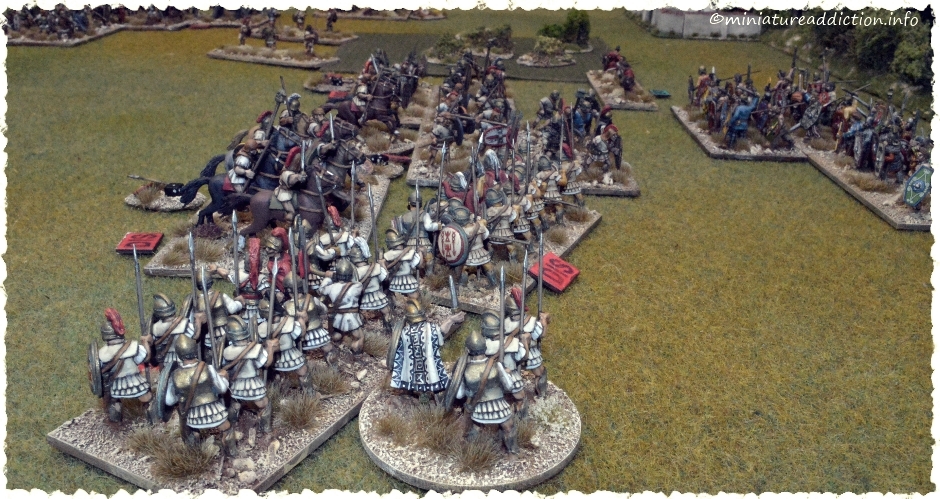

The Spanish win the initiative on turn three and launch a devastating charge against the Gallic war-bands. As these fall back in some disorder the Carthaginian seek to stabilize the situation with two units of flanking spear-men. This move is countered by the heroic efforts of a single element of Spanish cavalry. The central melee continues unabated with each side feeding more troops into the grinder. Although neither army gains any advantage the leader of the Spanish army is dragged from his horse and killed this turn.
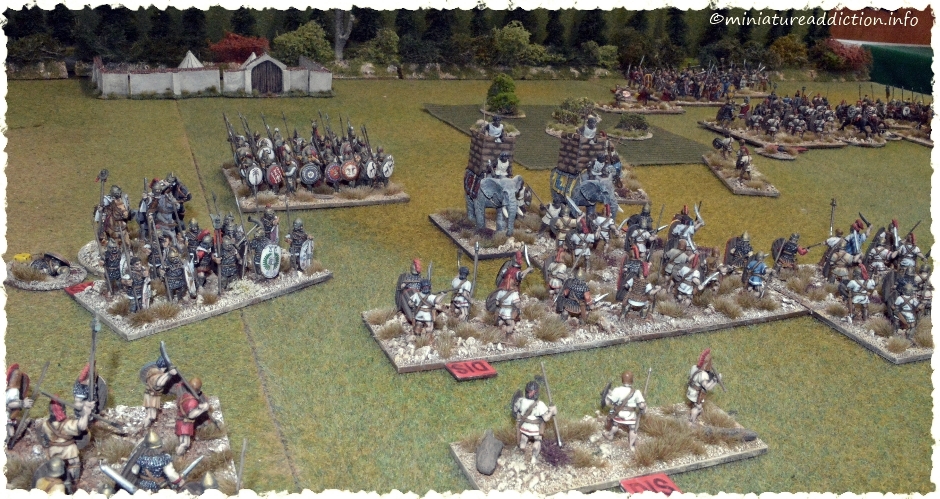

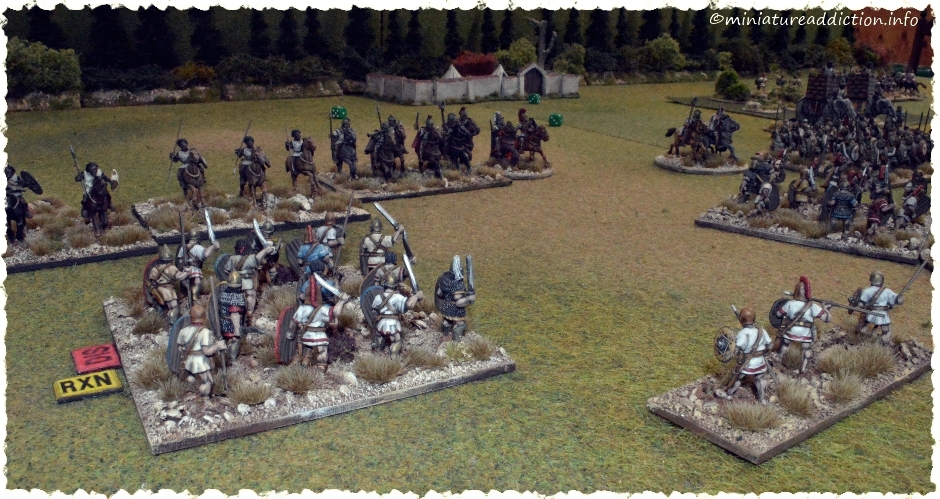
In an effort to break the central deadlock the Carthaginian commander leads a last unit of veteran spear-men into the fray. Already thinned by Caetrati javelin fire the attack falls flat and the veterans end the round pinned in combat. Before the Carthaginians can mobilize their cavalry to support these isolated troops the initiative switches in favour of the Spanish. Wasting no time a second unit of Celtic warriors is charged into the struggling veterans and demolishes them.
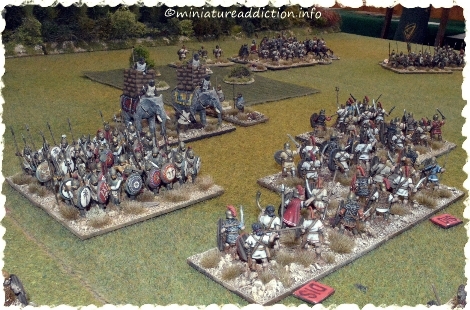
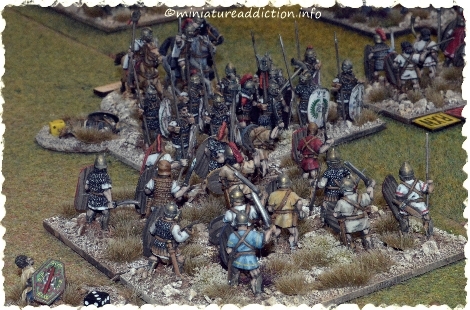

This disaster coupled with the previous loss of two elements of Numidian skirmishers breaks the central command. On the right the Spanish cavalry continues to hold the spear-men at bay. Buying just enough time for the Gallic war-bands to be chased from the field. The loss of these warriors and a single skirmish stand breaks that command and the army. The turn ends and the remaining Carthaginian troops make for the hills.
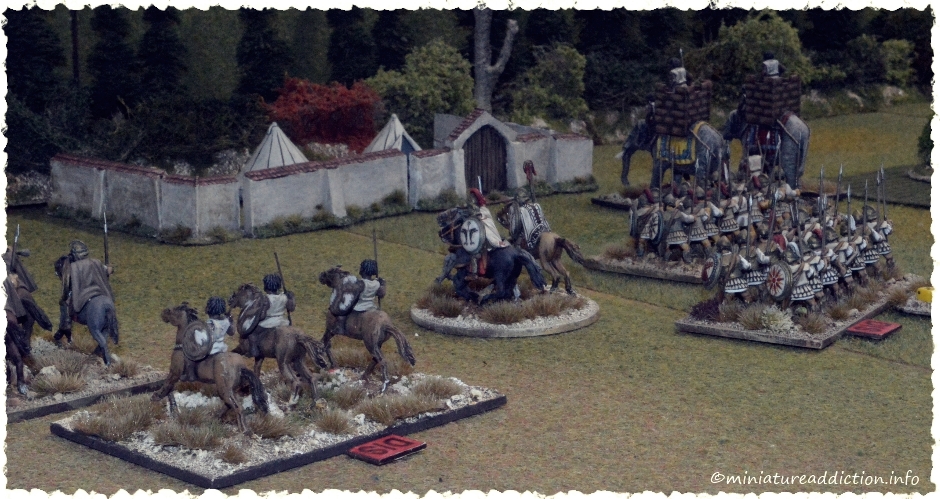
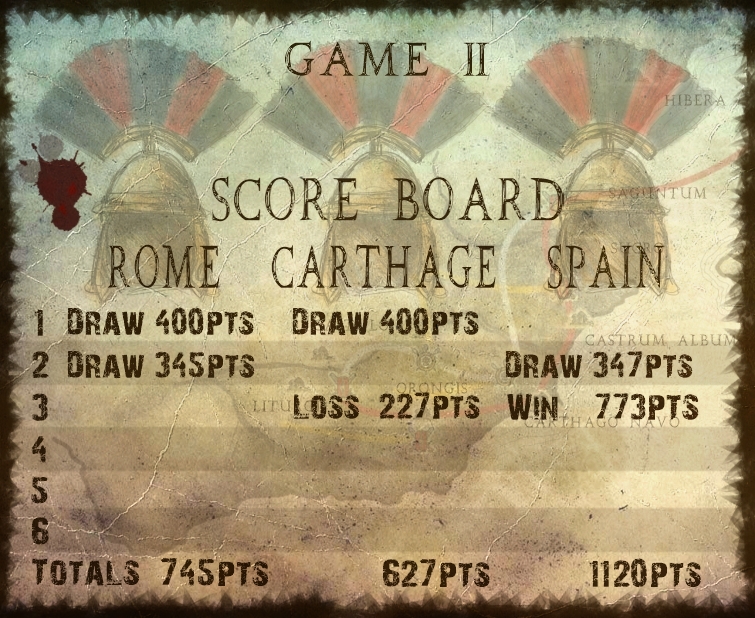
Wow, a quick game this time. Just four turns before the Carthaginian army was forced to quit the field. Although their army broke and ran it wasn’t a total disaster for them. Because they managed to destroy more than twenty five percent of the enemy’s army before collapsing they gain an Honourable defeat. This gives them a hundred points more than a straight defeat. The Spanish rack up the first Triumph for the campaign giving them the clear lead at this stage of the game. In the next battle their army morale will be bolstered by one break point and they will also gain the use of two tactical cards. Their expert army commander will return to the game at his original ranking (reliable) after his untimely demise in this battle.